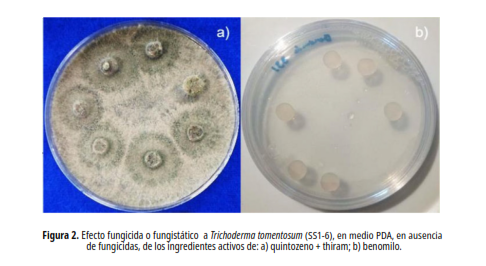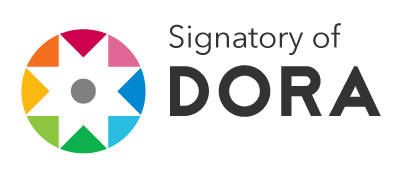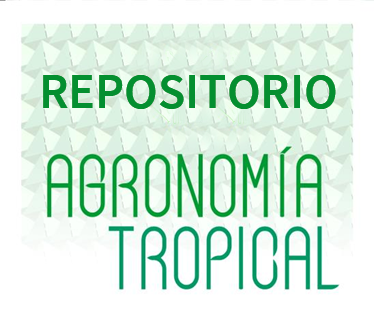In vitro sensitivity of five native strains of Trichoderma spp. different fungicides
Abstract
The State of Mexico represents the main producer of ornamentals in Mexico. The production of these crops is affected by the incidence of phytopathogens that affect the yields and the quality of the final product. In the present work, the in vitro sensitivity of five native Trichoderma spp. strains to the active ingredient of different fungicides (Cercobim 70 M®, Promilo 50 PH®, Captan 50 WP®, Interguzan 30-30®, Shogun 500 FW®) were determined. For this, monosporic cultures of five native strains (SS1-6, SS2-5, TFR3, TA4, and CUT-B) were used. The antagonistic strains evaluated presented a potential for their use in comprehensive management and sustainability in floriculture in the State of Mexico. Trichoderma tomentosum (SS1-6) showed in vitro sensitivity to benomyl; in the tested doses, it showed tolerance to captan and fluazinam. In the evaluated treatments. Trichoderma barbatum (SS2-5), Trichoderma asperellum (TFR3) and the Trichoderma harzianum strain (TA4) did not show in vitro sensitivity. On the other hand, Trichoderma asperellum (CUT-B) showed sensitivity to thiophanate methyl (Cercobim 70 M®) and showed tolerance to the active ingredients captan and fluazinam. Whereas, quintozene + thiram showed a fungistatic effect on the antagonist strain CUT-B.
Downloads
References
• Arcia, A. 1995. Uso de antagonistas en el control de fitopatógenos del suelo. In Control microbial de insectos plagas y enfermedades en cultivos. Universidad Centro Occidental Lisandro Alvarado (UCLA), Barquisimeto, Venezuela. p.185-204.
• Askew, DJ; Lang, MD. 1993. An adapted selective medium for the quantitative isolation of Trichoderma species (en línea). Plant Pathology 42 (5):686 - 690. Consultado 11 oct . 2019. Disponible en https://bit.ly/3vGyOud
• Barakat, MR; Al-Masri, IM. 2017. Effect of Trichoderma harzianum in combination with fungicides in controlling gray mold disease (Botrytis cinerea) of strawberry (en línea). American Journal of Plant Sciences 8(4):651- 665. Consultado 11 may. 2019. Disponible en https://bit.ly/3H8e2YT
• Castillo, GC; Pérez, A; Lovato, EA. 2017. Compatibilidad “in vitro” de aislados de Trichoderma spp. con fungicidas usados normalmente en el control de patógenos de suelo (en línea). Agrotecnia 25: 0328-4077. Consultado 10 dic. 2020. Disponible en https://bit.ly/3s5nlEB
• Companioni, B; Domínguez, G; García, R . 2019. Trichoderma: su potencial en el desarrollo sostenible de la agricultura (en línea). Revista Biotecnología Vegetal 19 (4): 237-248. Consultado 9 de may. 2019. Disponible en https://bit.ly/3cOvCnD
• De Liñán, C. 2012. Vademécum de agroquímicos de México. Tecnoagrícola de México 4, 766 p.
• Di Rienzo, JA; Casanoves, F; Balzarini, MG; González, L; Tablada, M; Robledo, CW. 2020. InfoStat Software Estadístico (en línea, pág. web). Centro de Transferencia InfoStat. Consultado 9 may. 2019. Disponible en https://bit.ly/35eBUwK
• Duarte-Leal, Y; Pozo-Martínez, L; Martínez-Coca, B. 2018. Antagonismo in vitro de cepas de Trichoderma asperellum Samuels, Lieckfeldt & Nirenbergfrente a aislados de Fusarium spp. (en linea). Revista de Protección Vegetal 33(1):1-10. Consultado 10 dic. 2019. Disponible en https://bit.ly/2NzkOkJ
• FRAC (Fungicide Resistance Action Committee) Code List. 2019. Fungal control agents sorted by cross resistance pattern and mode of action (including FRAC code numbering) (en línea). Consultado 11 may. 2019 Disponible en https://bit.ly/3s7341v
• Franco, OBM; Orrego, FAL. 2013. Compatibilidad in vitro de aislados nativos de Trichoderma spp. con fungicidas para el tratamiento de semillas (en línea). Investigación Agraria 15(1):15-22. Consultado 10 dic. 2019. Disponible en https://bit.ly/3s9tf82
• García, R; Domínguez, G; Chavarro, EA; Mora, ME.2017. Pathogenicit y of Verticillium dahliae klebahn in rootstock rose cv. Manetti (en línea). APS Anual Meeting, August 5-9. San Antonio, Texas. Consultado 9 oct. 2019. Disponible en https://bit.ly/2QbDckz
• García-Velasco, R; Alonso, A; Domínguez, G; Aguilar, S; Mora, ME; Companioni, B. 2021a. Efecto antagónico de cepas nativas de Trichoderma spp. contra el hongo fitopatógeno Rosellinia necatrix en México (en línea). Agronomía Tropical 71:1-15. Consultado 9 may. 2021. Disponible en https://bit.ly/3v788EX
• García-Velasco, R; Alonso, A; Domínguez, G; Aguilar, S; Mora, M; Companioni, B. 2021b. Antagonismo in vitro de cepas nativas de Trichoderma spp. contra Verticillium dahliae y Botrytis cinerea en el Estado de México (en línea). Agronomía Tropical 71:1-12. Consultado 7 nov. 2021. Disponible en https://bit.ly/3BBSVgo
• García-Velasco, R; González-Díaz, JG; Domínguez- Arismendi, G; Ayala-Escobar, V; Aguilar-Medel, S. 2012. Rosellinia necatrix en Rosa sp. y su evaluación a sensibilidad de fungicidas (en línea). Revista Chapingo Serie Horticultura 18(1):39-54. Consultado 9 dic. 2020. Disponible en https://bit.ly/3rZlGhw
• Khirallah, W; Mouden, N; Selmaoui, K; Achbani, EL; Benkirane, R; Ouazzani Touhami, A; Douira, A. 2016. Compatibility of Trichoderma spp. with some fungicides under in vitro conditions (en línea). International Journal of Recent Scientific Research 7 (2): 9060-9067. Consultado 10 dic. 2020. Disponible en https://bit.ly/33GA AT4
• Kirk, PM; Roskov, Y; Abucay, L; Orrell, T; Nicolson, D; Bourgoin, T; De Wever, A . 2019. Catalogue of life, 2019 Annual Checklist (en linea, pág.web). Catalogue of life. Consultado 11 may. 2019. Disponible en https://bit.ly/3h0bm58
• Martínez, B; Infante, D; Reyes, Y. 2013. Trichoderma spp. y su función en el control de plagas en cultivos (en línea). Protección vegetal 28(1):1- 11. Consultado 9 may. 2019. Disponible en https://bit.ly/3s4d8pE
• Martínez-Tapia, V; Dominguez, AG; Bravo, LL; García, V R . 2019. Efec tividad de Trichoderma spp. contra Puccinia horiana y es timulación de crecimiento en crisantemo (en línea). Revista Mexicana de Fitopatología 37: 29. Consultado 9 dic. 2020. Disponible en https://bit.ly/36wfmbx
• Mihuta-Grimm, L; Rowe, C. 1986. Trichoderma spp. as biocontrol agents of Rhizoctonia damping-off of radish in organic soil and comparison of four delivery systems (en línea). Phytopathology 76 (3): 306-312. Consultado 9 may. 2019. Disponible en https://bit.ly/3lD30Sr
• Muiño, LB; Sáenz, M; Stefanova, M; Porras, Á; Díaz, I. 2001. Compatibilidad de Trichoderma spp. con plaguicidas y fertilizantes en el cultivo del tabaco (en línea). Fitosanidad 5(2):3-9. Consultado 10 dic. 2019. Disponible en https://bit.ly/36uO0Tc
• Peláez-Álvarez, A; Santos-Villalobos, S; Yépez, EA; Parra- Cota, FI; Reyes- Rodríguez, RT. 2016. Efecto sinérgico de Trichoderma asperellum T8A y captan 50® contra Colletotrichum gloeosporioides (Penz.) (en línea). Revista Mexicana de Ciencias Agrícolas 7(6):1401-1412. Consultado 9 may. 2019. Disponible en https://bit.ly/3JHbe6F
• Pérez- Moreno, L; Belmonte -Vargas, JR; Núñez- Palenius, HG; Guzmán-Mendoza, R; Mendoza- Celedón, B. 201 5. Sensibilidad in vitro de dos especies de Sclerotinia spp. y Sclerotium cepivorum a agentes de control biológico y fungicidas. (en línea) Revista Mexicana de Fitopatología 33(2):256-267. Consultado 10 dic. 2019. Disponible en https://bit.ly/3LTqIqq
• Pérez-Rodríguez, LR; Pérez-Moreno, L; Guzmán- Mendoza, R; Sanzón - Gómez, D; Belmonte - Vargas, JR. 2019. Sensibilidad in vitro de hongos fitopatógenos causantes de enfermedades en fresa a controladores biológicos y fungicidas, en el estado de Guanajuato, México (en línea). Acta universitaria 29: e2339. Consultado 9 may. 2021. Disponible en https://bit.ly/3H9q7gD
• Pineda-Insuasti, JA; Benavides-Sotelo, EN; Duarte- Trujillo, AS; Burgos-Rada, CA; Soto-Arroyave, C P; Pineda - Soto, CA ; Fierro - Ramos, FJ;Mora - Muñoz, ES; Álvarez- Ramos, SE. 2017. Producción de biopreparados de Trichoderma spp: una revisión (en línea). I CIDCA 51(1):47–52. Consultado 18 oct. 2019. Disponible en https://bit.ly/31290ui
• Ramírez, JJ; Avitia-Rodríguez, JA. 2017. Floricultura mexicana en el siglo XXI: su desempeño en los mercados internacionales (en línea). Revista de Economía, X X XIV (88): 99-122. Consultado 18 oct. 2019. Disponible en https://bit.ly/3BBaTzP
• Ruano-Rosa, D; López-Herrera, CJ. 2015. Adecuación de la dosis mínima efectiva del fungicida flua- zinam para su uso combinado con Trichoderma atroviride en el control de la podredumbre blanca del aguacate. VIII Congreso Mundial de la Planta, 165-169.
• SIAVI (Sistema de Información Arancelaria Vía Internet, México). 2019. Sistema de información arancel-aria vía internet (en línea, pág. web). Consultado 9 dic. 2020. Disponible en https://bit.ly/3vMXzFi





